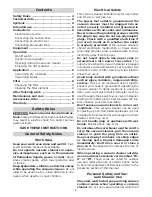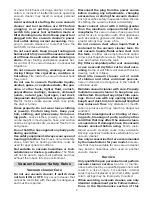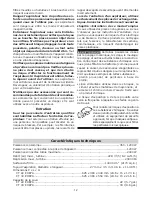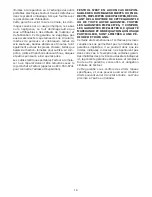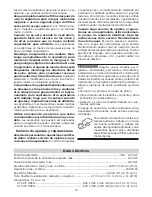
7
Electrical connection
The operating voltage and frequency shown on
the specifi cation plate must be the same as the
mains power voltage (wall socket).
Make sure that the vacuum cleaner is
switched off when you plug the power cable in.
The antistatic system (AS)
Friction in the suction hose causes electrostatic
charges which can result in unpleasant electric
shocks for the operator. In order to conduct these
static charges to earth, the extraction units are
provided with an antistatic system as a standard
feature. However, antistatic hoses and accessories
have to be used in this case.
The antistatic function will only work if the plug is
plugged into a totally earthed socket.
Temperature control
A temperature fuse switches the dust extractor off
before this reaches a critical temperature to pro-
tect against overheating - switch dust extractor off
and leave for around 5 minutes to cool down.
If the dust extractor still cannot be switched back
on, please consult a Festool-service centre.
Connecting the suction hose
Connect the suction hose at the extraction open-
ing (1.7).
Connecting an electric tool
Observe the maximum connected load on the ap-
pliance plug socket (see “Technical Data“)!
Make sure that the electric tool is
switched off when plugging it in and unplugging
it.
Connect the electric tool to the appliance plug
socket (1.2).
Connecting pneumatic tools
Make sure that the pneumatic tool
is switched off when plugging it in and unplug-
ging it.
When the compressed-air module (1.9) (452829)
is fi tted, the automatic cut-in of the appliance
also operates in conjunction with compressed-air
tools.
We also recommend fi tting of the VE supply unit
(452797). The supply unit fi lters and oils the
compressed air and allows the air pressure to be
regulated.
An IAS connecting piece (454757) is available for
connecting Festool compressed-air tools with the
IAS system.
To ensure trouble-free functioning of the auto-
matic cut-in, the operating pressure of the tool
must be 6 bar.
Equipment
• Tools or accessories can be stowed in the storage
compartments (1.6, not with CT 22 E HEPA).
• A systainer can be fi xed on the shelf with the
two clamps (1.1).
• An air blast is obtained by inserting a suction
hose in the blast opening (2.7).
• Stand / Brake: the wheels can be blocked by
the brakes (2.8), thus preventing the vacuum
cleaner from rolling away unexpectedly.
Operation
On/off switch
In position O (1.3) the vacuum cleaner is switched
off and the appliance plug socket (1.2) is dead.
Two modes of operation are possible:
a) Switch position „MAN“
The appliance plug socket is dead.
The cleaner motor starts immediately.
b) Switch position „Auto“
Before turning the switch to the
„Auto“ position, ensure that the tool connected to
the appliance plug socket is switched off.
The appliance plug socket is live.
The cleaner motor starts only when the tool con-
nected to the appliance plug socket is switched
on.
Suction force regulator
The suction force regulator (1.4) can be used to
vary the suction capacity. This permits a precise
adaptation to different substances to be picked
up.
Opening/closing the
vacuum cleaner
– Open retaining clamps (2.2) ,
– Raise upper part (2.4) until support catch (2.5)
engages.
Follow the reverse order to close the appliance.
You must raise the upper part slightly before de-
pressing or disengaging the support.
Emptying the dirt container
Always remove the upper part of
the vacuum cleaner before emptying the dirt
container (2.10)!
– Open the vacuum cleaner,
– Raise the upper part slightly, depress the support
(2.5),
– Raise the upper part to the stop (vertical posi-
tion),
Summary of Contents for CT 33 E
Page 2: ...2 1 10 1 9 1 8 1 6 1 7 1 3 1 5 1 4 1 2 1 1 1 ...
Page 3: ...3 2 8 2 9 2 11 2 12 3 4 3 4 3 3 2 1 2 2 2 3 2 5 2 6 2 7 2 3 2 10 2 4 3 1 ...
Page 24: ...24 ...
Page 25: ...25 ...
Page 26: ...26 ...




